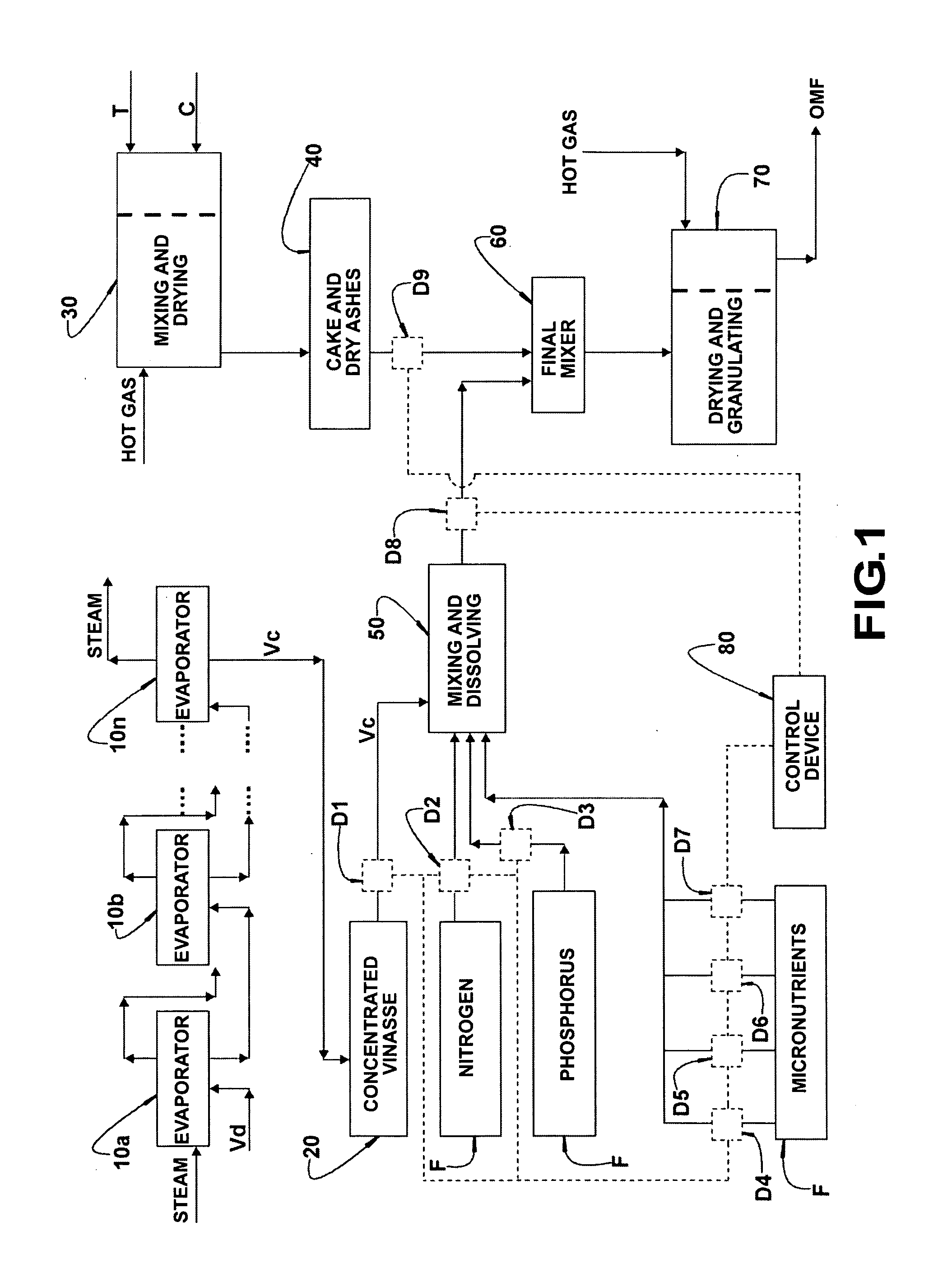Process for producing an organo-mineral fertilizer
a technology of organomineral fertilizer and process, which is applied in the direction of organic fertilizers, climate change adaptation, application, etc., can solve the problems of contaminating ground water, threatening the environment, temporary or definitive damage to soil, etc., and achieves less fossil fuel consumption, less soil compactation, and less investment in machines
- Summary
- Abstract
- Description
- Claims
- Application Information
AI Technical Summary
Benefits of technology
Problems solved by technology
Method used
Image
Examples
Embodiment Construction
[0064]In the described process, the diluted vinasse Vd, originating from the alcohol manufacturing process, is concentrated in evaporators 10a, 10b . . . 10n, with a concentration of 20 to 65% (p / p) of solids, preferably 65%, and conducted, as a concentrated vinasse Vc, to a storage tank 20 for posterior use.
[0065]The cake T originating from the filters is dehydrated / dried until a moisture between 2% and 70% (p / p), more preferably between 2% and 30% and, more preferably between 10% and 20% (p / p).
[0066]The cake T and the ash C coming from the boilers are mixed, the mixture formed by the filter cake and boiler ashes being dehydrated / dried until a moisture between 5% and 70% (p / p), more preferably between 5% and 20%, even more preferably between 10% and 12% (p / p), in an equipment 30 for removing water and drying, and conveyed to the storage in a silo 40.
[0067]The concentrated vinasse Vc is added with fertilizer elements, for example from sources of N, P, Ca, S, Mg and other micronutrie...
PUM
| Property | Measurement | Unit |
|---|---|---|
| distances | aaaaa | aaaaa |
| concentration | aaaaa | aaaaa |
| vacuum | aaaaa | aaaaa |
Abstract
Description
Claims
Application Information
 Login to View More
Login to View More - R&D
- Intellectual Property
- Life Sciences
- Materials
- Tech Scout
- Unparalleled Data Quality
- Higher Quality Content
- 60% Fewer Hallucinations
Browse by: Latest US Patents, China's latest patents, Technical Efficacy Thesaurus, Application Domain, Technology Topic, Popular Technical Reports.
© 2025 PatSnap. All rights reserved.Legal|Privacy policy|Modern Slavery Act Transparency Statement|Sitemap|About US| Contact US: help@patsnap.com


